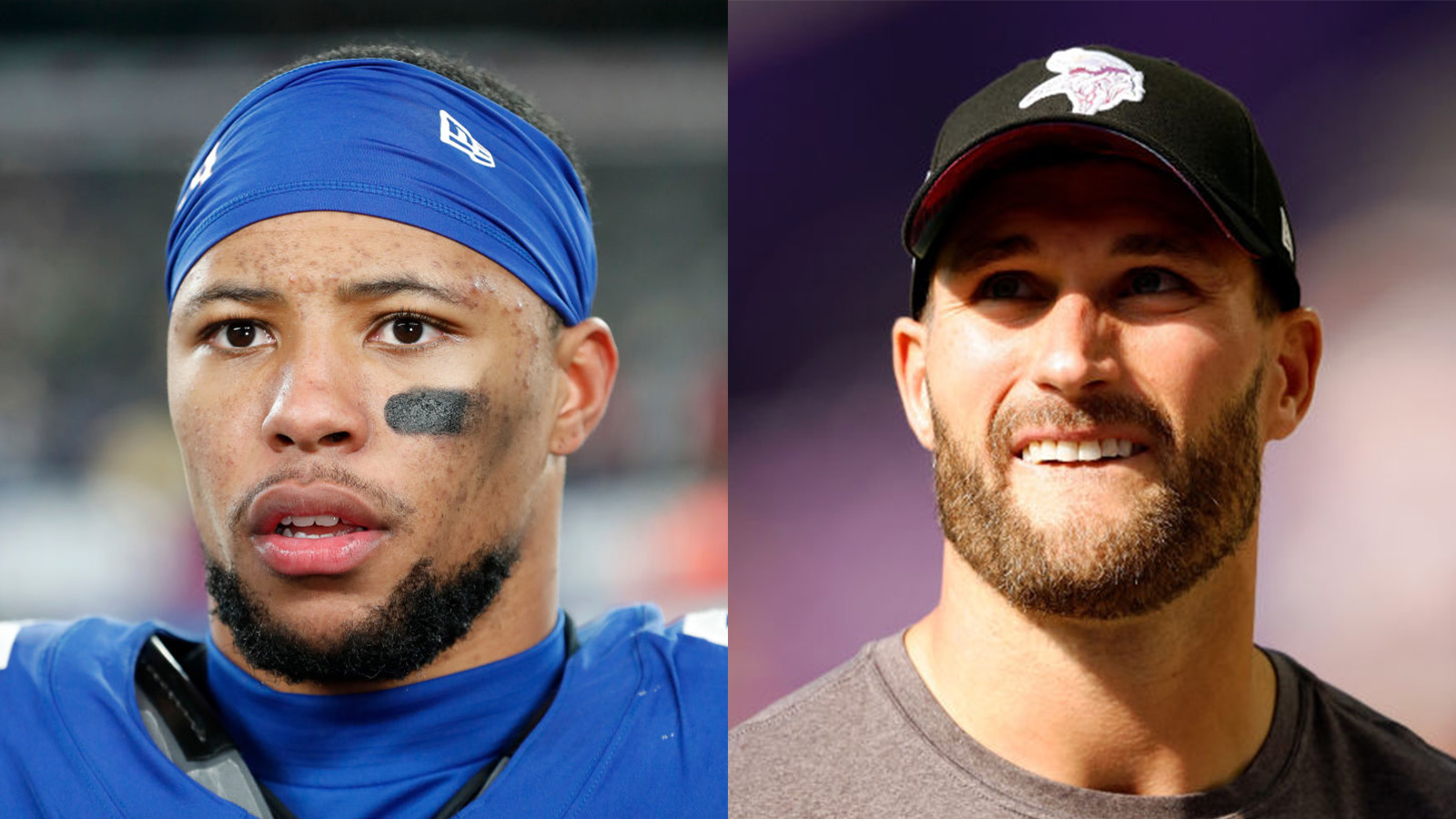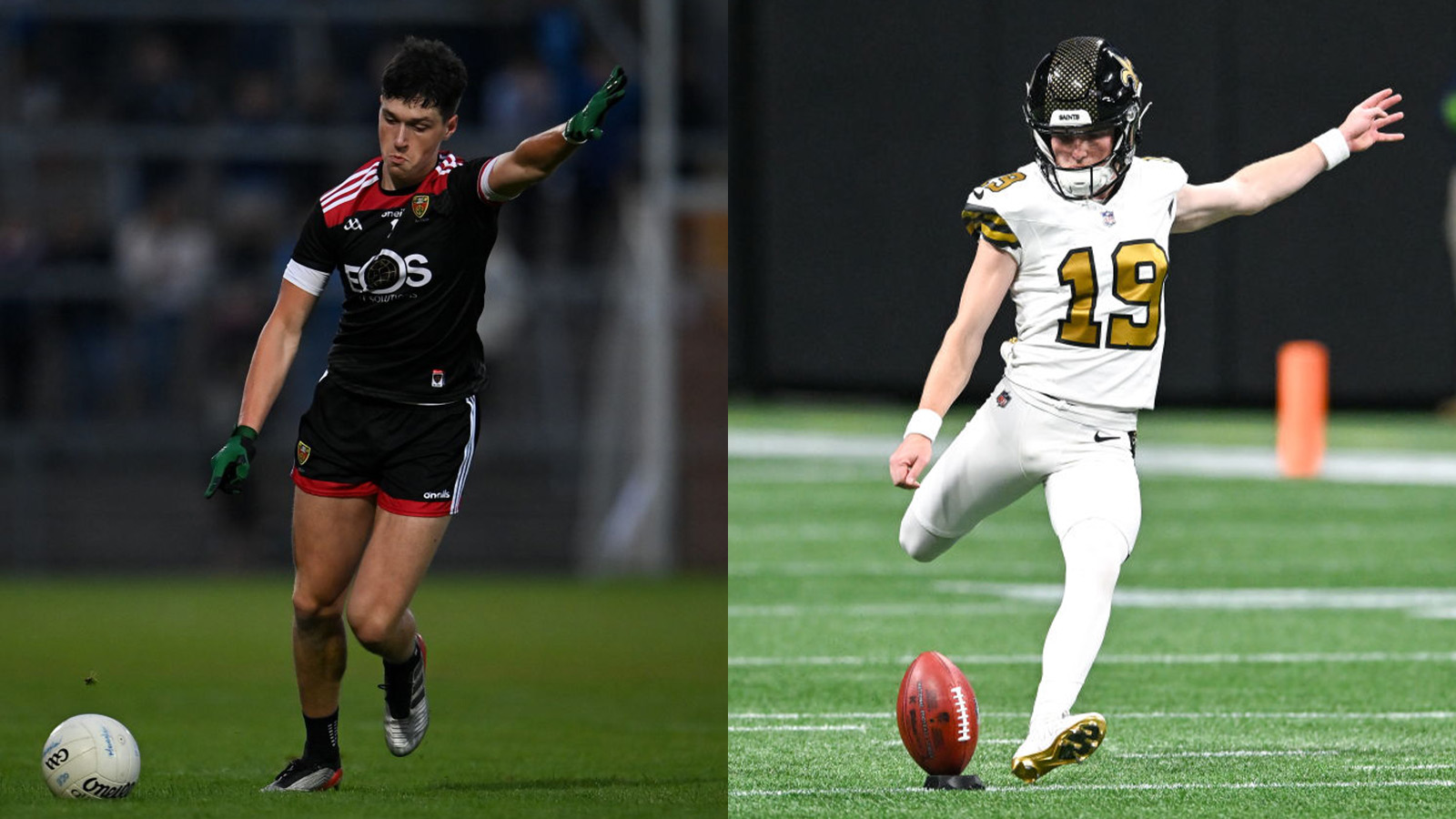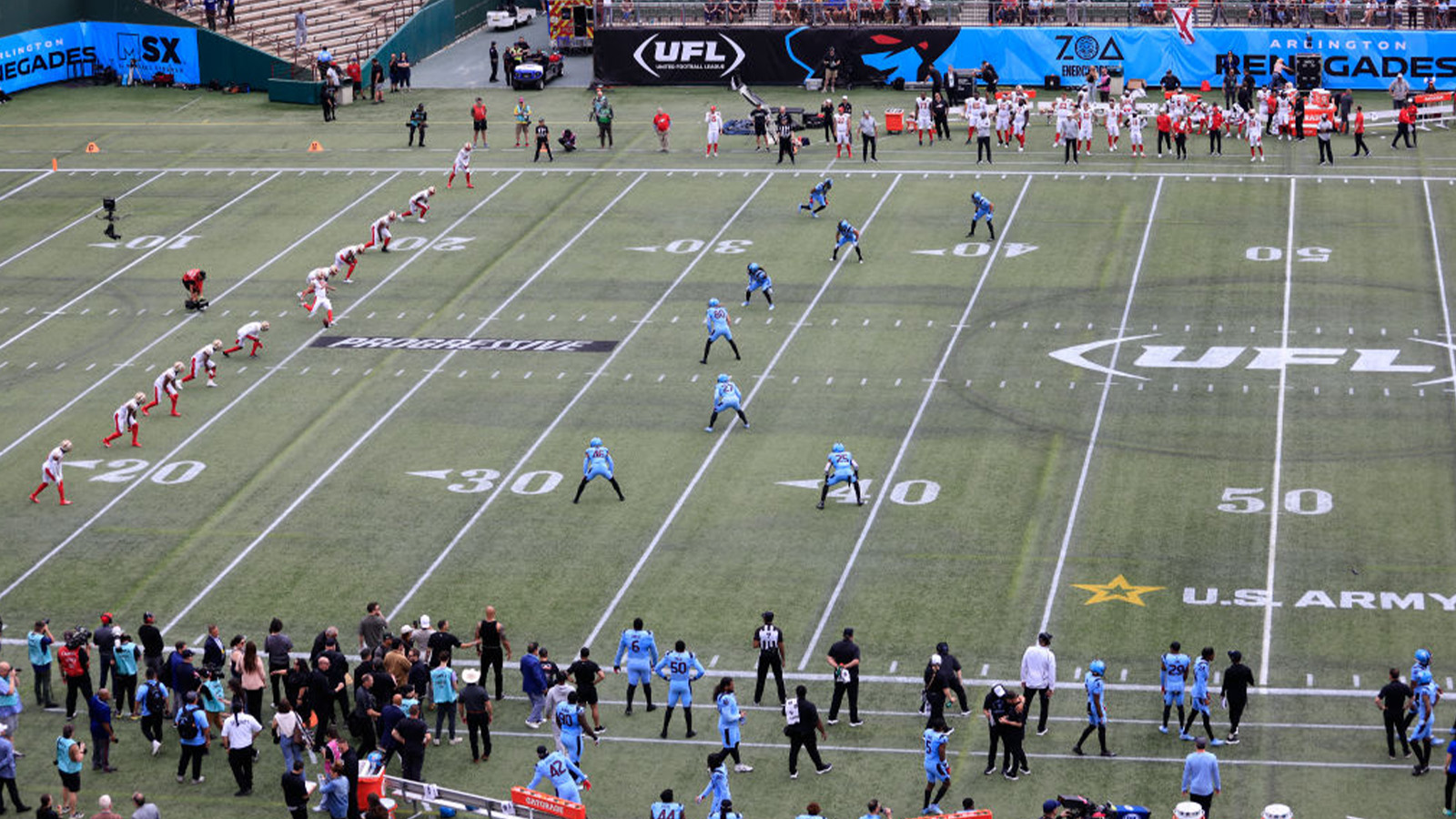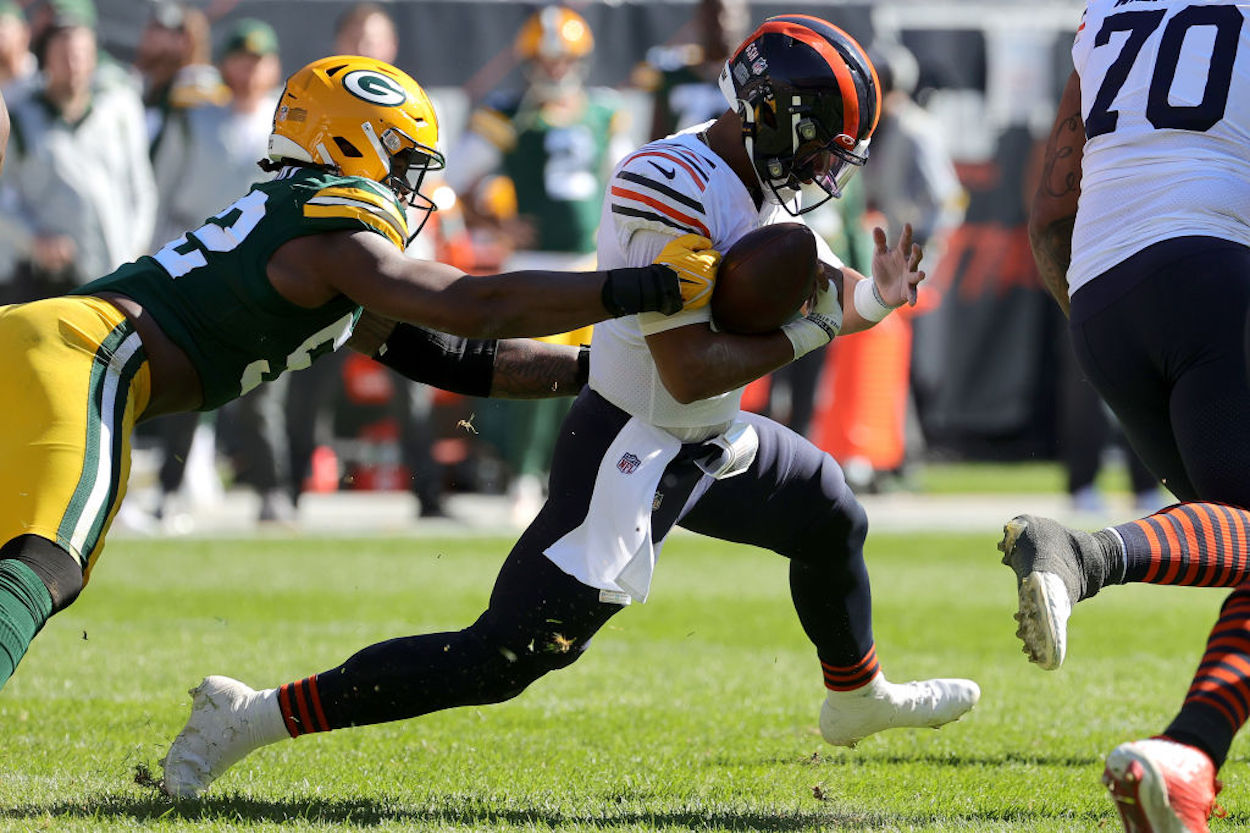
The Chicago Bears and Justin Fields are Painfully Failing Each Other
The Chicago Bears went all in on the future in the 2021 NFL Draft, trading up nine spots to take Ohio State quarterback Justin Fields at 11th overall. He was supposed to be the savior of the franchise that has suffered through mediocre quarterback play for nearly a decade.
The Fields era in Chicago has existed for one year, and things are already heading in the wrong direction. Not due to injuries or off-the-field drama but because of the Bears’ inability or willingness to surround its play caller with adequate talent.
Looking at the other quarterbacks in the 2021 draft class, their respective teams are actively trying to put their signal-caller in a position to succeed.
The Jacksonville Jaguars spent a fortune this offseason to aid Trevor Lawrence by signing Christian Kirk, Marvin Jones Jr., Zay Jones, and Evan Engram. They also hired a Super Bowl-winning coach in Doug Pederson.
As for Mac Jones, the New England Patriots acquired three pass catchers in 2021 while also adding DeVante Parker and rookie Tyquan Thornton this offseason.
Even the New York Jets went out and got talented pass catchers for Zack Wilson. The Jets have signed Corey Davis and C.J. Uzomah and drafted Garrett Wilson, one of the top receiver prospects in the 2022 NFL Draft.
These are all examples of how to build an offensive unit around your young signal caller. The formula has also worked wonders for the Cincinnati Bengals and the Los Angeles Chargers.
Chicago, on the other hand, had alternative plans.
The Chicago Bears are failing Justin Fields by not surrounding him with talented weapons
Because of the trade it took to land Fields, the Bears didn’t have a 2022 draft pick until the second round. Even then, the intention to take a pass catcher wasn’t there, as the front office passed on the likes of George Pickens and Skyy Moore to take two defensive backs in Kyler Gordon and Jaquan Brisker. Chicago elected to wait until the third round to take Tennessee’s Velus Jones Jr., the 14th receiver selected in the draft.
These moves, in particular, were perplexing since the Bears’ offense was one of the worst in the league last year while the defense was one of the best. The offense narrowly averaged more than 300 yards per game, ninth worst in the league. The defense, meanwhile, allowed 311.5 total yards and 191.6 passing yards per game. Both metrics ranked near the top of the NFL in 2021.
That’s what makes Chicago’s offseason plans so confusing. The defense was already performing at a high level, yet they still chose to add onto the pile before throwing Fields a bone. No Bears quarterback has ever thrown for over 4,000 yards in a single season, and it doesn’t seem like Fields will be able to change that trend.
The Bears did add Byron Pringle, Equanimeous St. Brown, and N’Keal Harry this offseason. Pringle was a serviceable option for the Chiefs the past three years, while St. Brown and Harry failed to eclipse more than 200 receiving yards in 2021 despite each receiver playing more than 12 games last season.
On top of the lackluster receiver room, Fields is left to work behind one of the worst offensive lines in the league. He was sacked 36 times and pressured on 27.3% of his dropbacks last season. Braxton Jones, a fifth-round rookie tackle, is projected to take over for Jason Peters at left tackle and has held his own in the preseason so far. The Bears also added three veteran pieces up front in free agency, but unless everyone promptly meshes together, it’s still going to be a bottom-five unit this season.
The lone bright spot in the receiver room is the return of Darnell Mooney, who had some noticeably strong chemistry with Fields a year ago. Mooney caught 81 passes for 1,055 yards and four touchdowns and should look to build off that as the new number one receiver in Chicago.
At the same time, Justin Fields hasn’t exactly exhibited growth at the NFL level
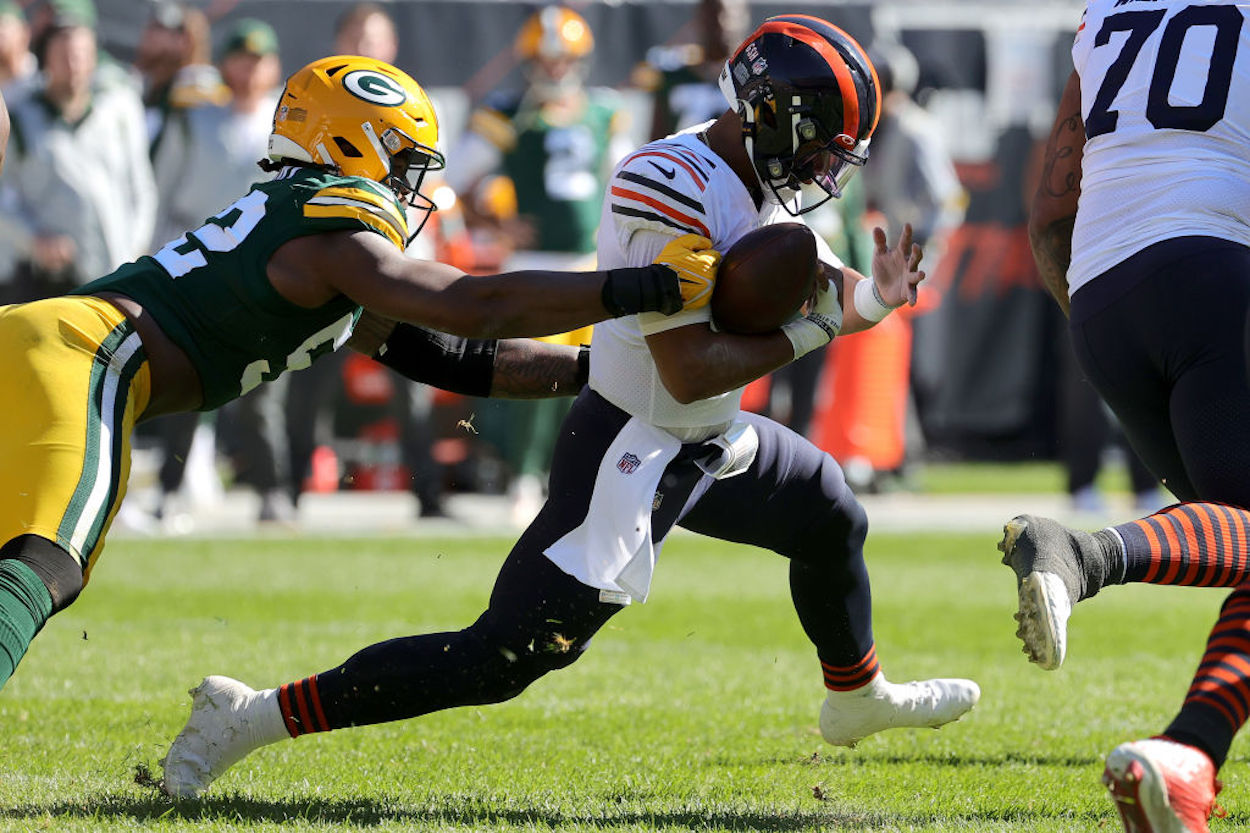
While the Bears certainly haven’t provided enough talent on offense, Fields still hasn’t shown signs of development, and it became very apparent in the second preseason game.
Pro Football Focus’ Seth Galina put out a Twitter thread showcasing the errors in Fields’ decision-making. Too often, the Bears’ quarterback will bail out of the pocket at the first sign of trouble instead of re-adjusting to open space and keeping his eyes downfield. This limits his overall development and ability to go through progressions. By the time a receiver breaks free, Fields has already left the pocket in an attempt to gain yardage on the ground.
The young signal-caller finished last season with 46 scrambles, the fourth most in the NFL. And while it’s normal for a quarterback to be nimble on his feet, he can’t continue to rely on it as a feasible way to drive down the field. It’s become a fallback in his game and has limited his growth. Scrambling won’t always be an option, and he needs to learn to step up and make difficult throws in a collapsing pocket instead of attempting to escape.
The Bears did hire Luke Getsy, the Green Bay Packers’ Quarterback coach and passing game coordinator since 2020, to be the offensive coordinator, which is a small step in the right direction since Aaron Rodgers has won back-to-back MVPs the last two seasons.
Nevertheless, the outlook on the Bears’ 2022 season isn’t good. They ranked dead last in Dan Hanzus’ NFL.com Power Rankings heading into the season. Fields will have to swiftly develop in year two while playing with inferior weapons and protection. Otherwise, he could be on his way out of Chicago.
But maybe that’s what general manager Ryan Poles wants. The 2023 quarterback class is flush with talent and could present an opportunity to completely reset at the most important position.
Stats courtesy of Pro-Football-Reference
